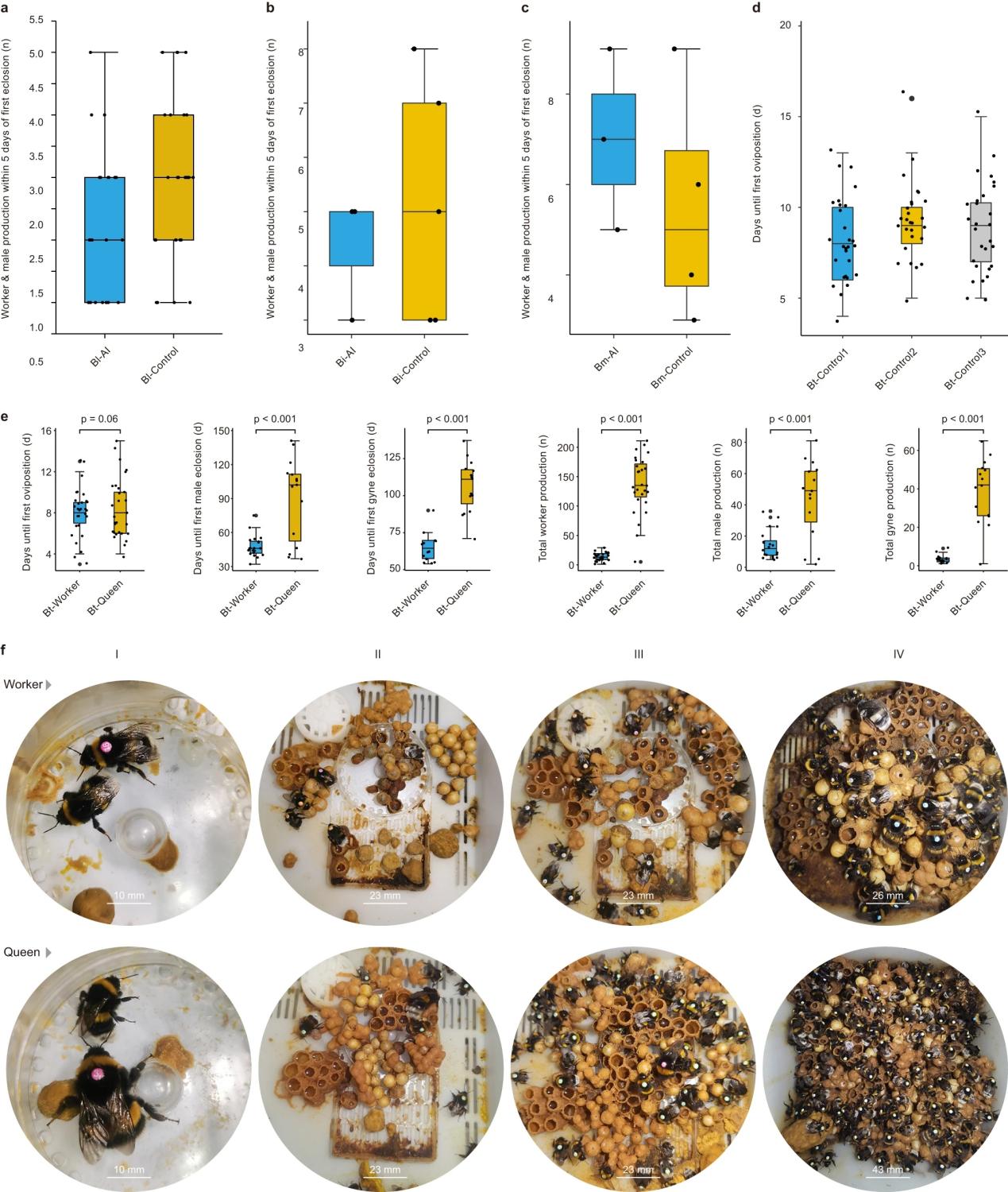Uncover the mystery of superorganism bumblebee evolution, how do worker bees act as queens
Date:2023-11-13
On September 7, Led by the Pollinator breeding and pollination application innovation team from the Institute of Apicultural Research, Chinese Academy of Agricultural Sciences, and jointly with Shanghai Suosheng Biotechnology Co., LTD., Royal Holloway University of London, Johannes Gutenberg University Mainz and other institutions, the research results were published in Nature Communications, which solved the mystery of bumble bee evolution and challenged the cognition that bumblebee workers could not mate for life before emergence. The finding is a major leap forward in understanding the evolution of social insects such as bees.
More than a century ago, William Morton Wheeler proposed that social insect colonies can be regarded as superorganisms, and more recently the emergence of superorganisms has been identified as a major transition in evolution. Pre-adult caste determination, leading to reproductively dominant queens, which mate, store sperm, and lay fertilized eggs, and lifetime unmatedness of worker castes, are key features of these superorganisms in ants, termites, bees and wasps. Once these features have been achieved, the lineage has passed its point of no return. As a consequence, workers in species like honey bees and many ant species have either lost, or retain only vestigial spermathecal structures. However, workers in some ant families, social wasps, and bumble bees retain intact reproductive organs, in the latter case despite 25-40 million years of evolution. This largely remains an evolutionary mystery,raising interesting questions to explore: Is bumble bee worker spermatheca functionality? Can bumble bee workers act as functional reproductive queens?
To find answers, one key things was needed: Optimization of artificial insemination technology and equipment. In our test study, we artificially inseminated workers of Bombus lantschouensis, B. ignitus (which is in the same subgenus as B. lantschouensis, Bombus sensu stricto, with a common ancestor ~8MYA14) and B. montivagus (which is in the subgenus Megabombus, sharing a common ancestor with the subgenus Bombus s.s. ~25MYA14) which all produced female offspring. As these species diverged from a common ancestor ~25 MYA14, the most parsimonious explanation of our findings suggest that such abilities and associated mechanisms may be conserved across all social bumble bees.
To understand if bumble bee workers can act as functional queens (i.e., rear a colony through the complete lifecycle), we used the buff-tailed bumble bee, B. terrestris (also a member of the subgenus Bombus s.s., which shares a common ancestor with B. ignitus ~6MYA14), as a model system to compare colony production by artificially inseminated workers and queens. Our study show that inseminated workers can rear colonies and produce female offspring throughout the colony life-cycle, an act previously believed to be the sole domain of queens.
Then a new question arose, and since the spermatheca of bumblebee workers had a reproductive function, we boldly hypothesized that bumblebee workers might also have the mating ability.
One of the surprising outcomes of the study is that social isolation was associated with mating success in workers. Workers kept individually for seven days were more likely to mate than workers that spent the same period of time in their natal colonies, providing the first evidence that social context post-eclosion influences mating potential. This is in sharp contrast to gynes, which do not leave the nest until ~seven days post-eclosion but are still able to mate. Mating experiments identified that social isolation is a trigger for successful mating, with social interactions with brood, workers, or queens inhibiting mating. Subsequent semi-field experiments showed that workers can naturally mate in de-queened colonies and go on to produce queen offspring. Using semi-field experiments we show that workers can naturally mate in de-queened colonies and go on to produce queen offspring. In the wild, this may act as a strategy to maintain colonies in response to the early loss of the queen.
our results indicate that lifetime unmatedness of workers, in its strictest sense, is neither a pre-requisite for nor a necessary expectation of superorganisms. Bumble bee colonies, which have queens who mate once at the beginning of their life, and pre-imaginal determination of queen and worker morphotypes, are clearly superorganisms as defined by both early and recent definitions. Our results suggest that workers will remain unmated under queen-right conditions, as expected by current theory, but that workers may mate and rear colonies in response to queen-loss. Transcriptomic analyses suggest that such workers are activating a gene regulatory network that is normally found in queens. We suggest that there may be a difference between annual and perennial superorganisms, where the ecology of annual superorganisms selects for the retention of worker mating, and the ability to express a queen-like gene regulatory network, as a back-up strategy. Further studies investigating this in annual vespid wasps would be valuable. While the bulk of our experiments used commercial colonies of B. terrestris, there is no a priori reason to suggest that this would impact our conclusions. Firstly, where parallel experiments were conducted, results from commercial B. terrestris mirrored those from the three wild species we tested. Second, commercial conditions select for faster colony growth, larger colony size, and more queen production, and only queens are mated in commercial facilities, all of which are more likely to select against reproductive traits in workers. If our results can be extrapolated to other taxa, they may explain the apparent paradox of workers retaining intact spermatheca that apparently never receive sperm in superorganisms such as bumble bees, yellowjackets, and certain ant subfamilies. Finally, the ability of workers to mate and produce colonies provides an exciting new tool to combat global declines in bumble bees. Artificial insemination of workers from rare and declining species could be used to generate large numbers of reproductive females for release back into the wild, reinforcing, and reintroducing bumble bee populations to habitats where they are essential pollinators.
Link to this paper:https://doi.org/10.1038/s41467-023-41198-6

Egg-laying and colony development for workers and queens in the artificial insemination experiments